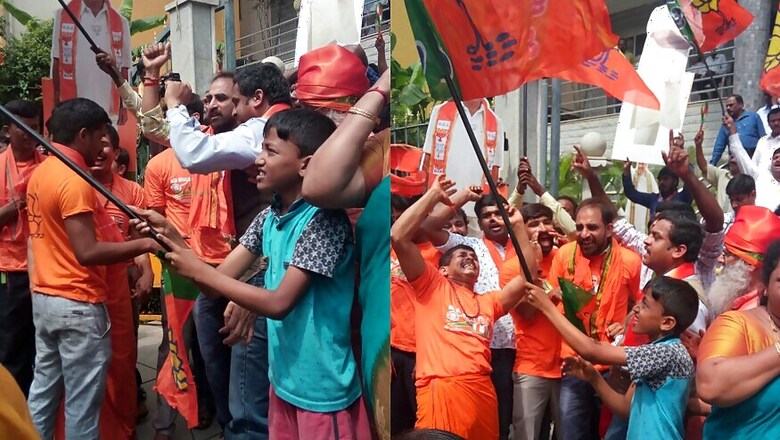
views
New Delhi: The Bharatiya Janata Party (BJP) is all set to become the single largest party in the state of Karnataka, reducing Congress to yet another defeat in a state election.
As the people of the state have affirmed their faith in the saffron party, a look at the data suggest that BJP has won back the seats they had lost during the last elections in 2013 when the party was reduced to a mere 40 seats as blatant corruption, aggressive Hindutva and factionalism had led to the demise of the saffron party in the southern state.
The 2013 Assembly elections witnessed a record voter turnout of 71.29%, the second highest since 1978 when almost 71.9% people voted. When the verdict was out, the BJP saw a loss of 13.96 % of the vote share. This was in contrast to 2008 Assembly elections when 88.57 lakh voters endorsed the BJP, eventually helping the party come in power for the first time in the state. However, in 2013, more than 26.25 lakh voters (30% of voters who voted for the BJP in 2008) did not vote for the party.
The two important regions where the BJP had lost heavily, both electorally and politically, were in the Coastal Karnataka and the Malnad region. These are the same areas where BJP has done immensely well this time around.
In Coastal regions of Karnataka the BJP has made strong gains this time around. According to the latest trends, the party is expected to win 18 out of 21 coastal seats. It is the same region where BJP witnessed a whitewash in last elections. In Dakshina Kannada, the BJP had lost all the eight Assembly segments to the Congress and in Udupi, it won just a single seat out of five. This time, however, the party is set to draw a big hole in Congress’ seats in the region.
The Bharatiya Janata Party’s (BJP’s) resurgence in the state of Karnataka has also much to do with its dominance in the urban and semi-urban parts of the state, data suggest.
In fact, according to the latest trends, BJP is set to almost win 17 of the 28 seats in Bengaluru city.
According to Election Commission data, Karnataka consists of 70 urban and 154 rural assembly constituencies.
Many poll pundits had earlier projected that urban-rural divide, other than the caste dynamics, would be a key to the Karnataka poll outcome.
Mumbai-Karnataka is another region where the BJP has put up an impressive performance. The latest trends suggest that the party will get more than 30 seats in the region out of 50.
In 2013, the Congress had swept the BJP out of Mumbai-Karnataka region, comprising seven districts of north Karnataka.
Out of a total 56 seats, the Congress went beyond its own expectations by bagging 34 seats. While the BJP has managed to retain just 14 from the 38 seats it was won in the 2008 elections.
In Central Karnataka too, the BJP is expected to win more than 24 seats, current trends suggest.
The region has 35 seats and in 2013 elections Congress party came out with an astounding results with its candidates winning more than half of the seats. It had won 18 of the 32 seats. However, the party might be limited to less than 10 seats after a surge in BJP votes in the region.
The biggest gains for the BJP might as well come from the Hyderabad-Karntaka region. The latest trends suggest that the party can win 16 seats out of the 31 seats in the region.
In 2013, the BJP had won only four seats from the region.




















Comments
0 comment